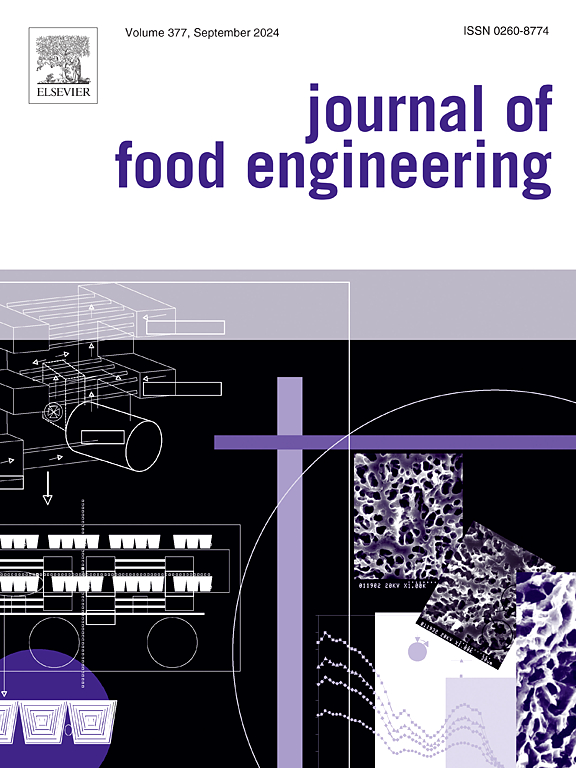混合植物蛋白组合对膨化高水分肉类类似物理化、质地、结构和营养特性的影响
IF 5.8
2区 农林科学
Q1 ENGINEERING, CHEMICAL
引用次数: 0
摘要
众所周知,植物蛋白比动物蛋白含有更少的必需氨基酸。本研究探索了利用高水分挤压法制备6种含水量为50%和60%的植物混合蛋白基质(MPM),以模拟鸡胸肉的氨基酸分布。采用x射线计算机断层扫描和织构分析来评估这些挤压的MPM的结构和织构性能。结果表明,含有50%大米蛋白的挤压型塑料硬度最高。用大豆和豌豆蛋白配制的挤出MPM在水分含量为55%时表现出最高的纹理化程度,大豆和鹰嘴豆蛋白在60%时表现出最高的纹理化程度。化学键解析和傅里叶变换红外光谱显示,在所有挤压的MPM中,无论特定的植物蛋白质来源如何,氢键和β-片是稳定蛋白质结构的主要力量。此外,与现有的商业素食产品相比,挤压的MPM的嘌呤含量较低。这些发现强调了从各种植物蛋白组合中提取的MPM在生产具有一系列结构和质地属性的肉类类似物方面的潜力。这种方法为定制MPM以满足消费者的不同偏好提供了有希望的机会。本文章由计算机程序翻译,如有差异,请以英文原文为准。
Influence of mixed plant protein combinations on the physicochemical, textural, structural and nutritional properties of extruded high-moisture meat analogues
Plant proteins are known to contain lesser amounts of essential amino acids than animal proteins. This study explored using high-moisture extrusion to create six plant-based mixed protein matrices (MPM) at 50 % and 60 % moisture content to mimic the amino acid profile of chicken breast meat. X-ray computed tomography and textural analysis were employed to evaluate the structural and textural properties of these extruded MPM. Results revealed that extruded MPM containing 50 % rice protein exhibited the highest hardness. Extruded MPM formulated with soy and pea proteins demonstrated the highest degree of texturisation at 55 % moisture content, and soy and chickpea proteins at 60 %. Chemical bond elucidation and Fourier-transform infrared spectroscopy revealed hydrogen bonds and β-sheets as the dominant forces stabilising the protein structure across all extruded MPM, regardless of the specific plant protein source. Additionally, the purine content of extruded MPM was lower compared to existing commercial vegetarian products. These findings underscore the potential of MPM derived from various plant protein combinations to produce meat analogues with a range of structural and textural attributes. This approach presents promising opportunities for tailoring MPM to meet the diverse preferences of consumers.
求助全文
通过发布文献求助,成功后即可免费获取论文全文。
去求助
来源期刊

Journal of Food Engineering
工程技术-工程:化工
CiteScore
11.80
自引率
5.50%
发文量
275
审稿时长
24 days
期刊介绍:
The journal publishes original research and review papers on any subject at the interface between food and engineering, particularly those of relevance to industry, including:
Engineering properties of foods, food physics and physical chemistry; processing, measurement, control, packaging, storage and distribution; engineering aspects of the design and production of novel foods and of food service and catering; design and operation of food processes, plant and equipment; economics of food engineering, including the economics of alternative processes.
Accounts of food engineering achievements are of particular value.
 求助内容:
求助内容: 应助结果提醒方式:
应助结果提醒方式:


